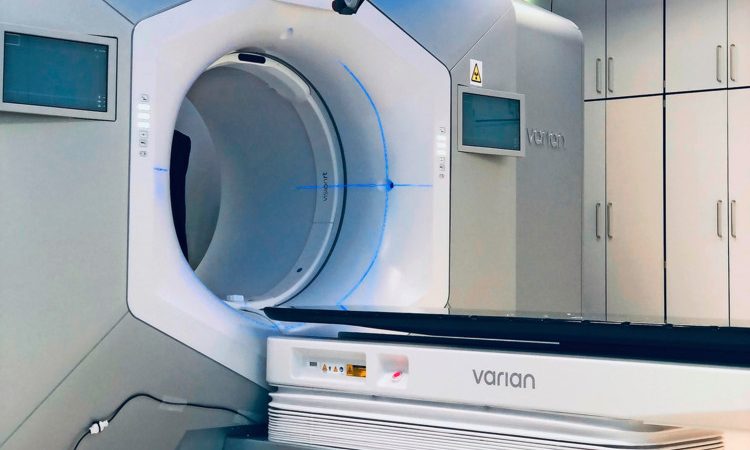
Since February, the National Center for Radiotherapy has been applying a new technique to women with breast cancer.
During radiation therapy to treat cancer, some adverse effects may occur after the sessions. To reduce these consequences on health, last year, the National Center for Radiotherapy François Bacless installed a completely new device for women with breast cancer.
This method is radiotherapy for short apnea. How does it work? During the session, the patient must, for twenty to twenty-five seconds, inhale deeply and then hold her breath. This is when treatment (radiation) is given. The gesture is repeated several times for a few minutes.
The goal is to protect the heart as much as possible from the radiation that is used to destroy cancer cells. “Inhaling deeply helps keep the heart away from the breast wall by inflating the rib cage. This limits the heart damage that can occur in this type of cancer. “We only do this on the left breast, because it is closest to the heart,” explains Anne Eschenbrenner, M.D., a biologist. Radiation physics.
In a press release, Dr. Beranger-Frédéric, radiotherapist and oncologist at the Center François Bacless, explained that this method allows “an average reduction of 7.5% per Gray (a unit of measurement of absorbed dose during irradiation with ionizing radiation) for a long period” – long-term cardiac side effects. .
Highly supervised technique
But before practicing this method, you need prior support from the patient. In the beginning, it is the doctor who will talk to him about this device during the first consultation. “He can even give him small exercises to do at home to learn how to hold for twenty seconds. Then the patient returns to the simulation and there is another interview (…). “This will be explained again during the examination before treatment and when it is given,” explains Melanie Habay, assistant. Medical technician for radiotherapy.
To be able to develop this new specific radiotherapy, nursing staff were also trained. “There are a total of four doctors, four physicists and seven technicians in the reference team. In addition to basic training, we have a refresher course every year,” says the radiation physicist.
Contrary to what one might think, this method can be practiced at any age. “The only criterion is to be able to maintain apnea. That's why we try to de-stress patients because sometimes they're afraid they won't be able to do it, whereas it can be very simple when you're really comfortable (…),” she explains. Anne Eschenbrenner: “We have older people who do very well, and young people who fail.”
The radiation physicist would like to emphasize that if apnea is not performed correctly during the session, it will not affect the success of the treatment. “We also have very good results in free breathing, so there is no need to worry.”
Since the launch of this shielded radiation therapy last February, thirty out of forty patients have benefited from it. “Sometimes if there are certain concerns, they accept them easily, because they are happy to participate in their treatment,” explains Melanie Habay. In the future, the National Center for Radiotherapy in Luxembourg wants to develop this technique for other types of cancer. “We would really like to be able to do this for the right breast as well. Here, we would protect the lungs. Then, why not for lung and liver cancer. This is something that has been proven effective in many scientific journals,” says Anne Eschenbrenner.
This radiotherapy for short apnea has been around for several years in several European countries, such as in France, and is being performed for the first time in Luxembourg.






